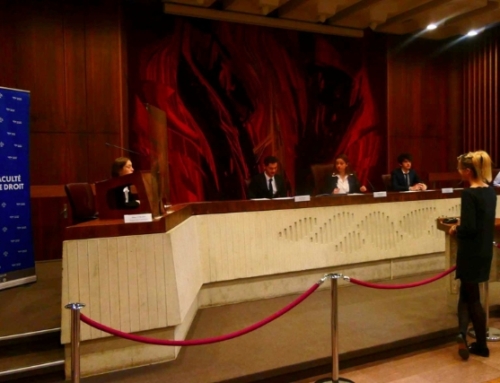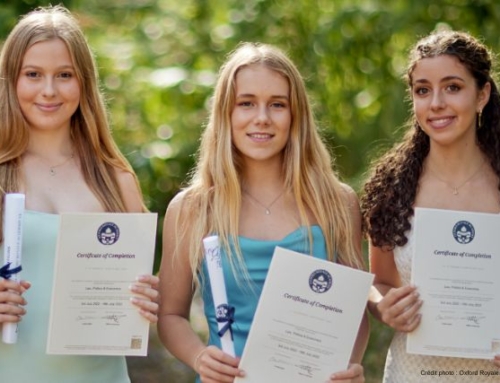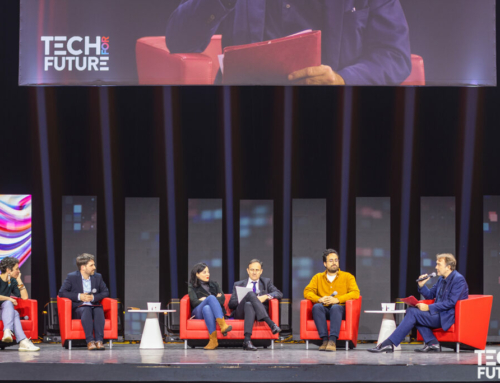When you look at the search curves for ChatGPT on the most popular search engines, it’s clear that the ChatGPT phenomenon is far more popular than Metavers ever was. Everyone’s talking about it, and many have had fun testing it. The fact that it’s open and accessible to anyone who knows how to ask a question, and the speed with which the tool provides answers that are at first sight relatively relevant, make it as likeable as chat photos on social networks. Thanks to this near-universal social acceptance, Chat GPT has become the fastest-selling digital tool in digital history, with over 100 million users. Incredible but true!
From now on, everyone is convinced that it will be easier and quicker to write a text, an essay, an argumentative presentation, and we won’t even mention here the posts published on the networks, or the answers given to consumers by customer services. What’s new about this tool is that it’s conversational. You can talk to it, question it, contradict it, challenge it – it practically has the answer to everything. Not quite yet, but future versions already promise more than 1,000 times greater quality, relevance and depth of analysis.
So, how can the world of higher education react to what seems to be the dawn of a new revolution for written exchanges and, by extension, for assessments? Should we embrace the technology and make the most of it? How can we guard against misuse?
Simone’s Robots set off to investigate their favorite playground: French universities and higher education establishments. By way of introduction, ChatGPT is just the tip of the iceberg, and other tools using artificial intelligence have already invaded the fields of artistic creation and content, both written and visual. Producing a video featuring a 3D avatar with a very human voice, capable of delivering a well-written speech, is now within the reach of almost anyone. As a result, it’s becoming increasingly difficult to distinguish fact from fiction when it comes to information. And that’s just one of the problems facing our society.
What model lies behind ChatGPT?
As Colin de la Higuera reminds us in his article for the Unesco Relia Chair at the University of Nantes,
“its engine is called GPT-3, and is the 3rd iteration of a Large Language Model (LLM). Built from a maximum of texts found on the Internet (estimated at 570 GB or 300 billion words), the result is a model called a neural network, which can be seen as a gigantic system of equations. This system will be defined by 175 billion parameters. Hours of computation on powerful machines have made it possible to adjust (or “train”) these parameters.”
Version 4 has already been announced and is set to far exceed this remarkable performance. The author rightly emphasizes the fact that artificial intelligence is the subject of numerous studies and research projects within universities themselves, while teacher-researchers are also being trained in the new skills it brings.
Students, for their part, immediately seized on the unprecedented capabilities of this new type of assistant. Is this surprising? Is it any wonder that a generation born into a digitalized world is the first to understand the immediate benefits of technology? Of course, the clever ones have understood that the conversational assistant can be called upon at any time, for any type of written production, including in another language, and in a matter of seconds. As a result, suspicions and proven cases of “cheating” multiplied, even prompting the highly prestigious Sciences Po to brandish a ban on its use, which was quickly re-characterized as a charter to be respected by students, as part of a broader anti-plagiarism campaign.
An official statement from Sergei Guriev, Director of Education and Research, underlining the importance of the challenge posed by new technologies in the following terms:
“ChatGPT is a major innovation that is part of the digital transition underway in our societies. Under Mathias Vicherat’s leadership, we are placing this issue at the heart of Sciences Po’s pedagogical and research projects. It is essential for an institution concerned with guaranteeing the quality and integrity of its courses and diplomas to supervise the use of this tool.”
Obviously, it will be very difficult to ban. Many voices are calling for reason, and asking all teachers to adapt both their teaching methods and assessment models. There is an urgent need to take new practices into account, and to work with students on the basis of what ChatGPT can provide as initial elements in a project that will need to be refined, criticized and enriched by everyone’s personal and individual vision. Relying on a basic, common text will not be enough to build an essay. We need to go further.
“We need to ensure that our higher education and research system is in tune with global challenges such as the fight against climate change, global health and, of course, emerging technologies. We’ve got a big challenge ahead of us, but I’m convinced that we can rise to this challenge together” declared Sylvie Retailleau, French Minister for Higher Education and Research, at the close of the Think Education event on January 26. She continued for a few moments with a speech that some would have described as “tongue-in-cheek”, before admitting that it had been written by… ChatGPT! Who, at the time, could have said so? How can we not understand that the tool is quite capable of deceiving our vigilance?
Certains proposent de développer des solutions anti-fraude capables de détecter un texte produit par l’intelligence artificielle, dans la lignée des logiciels anti-plagiat qui ont vu le jour lorsque Wikipedia est devenu un contributeur un peu trop présent dans le monde étudiant. C’est le cas de Compilatio, dont le président Frédéric Agnès explique dans une interview donnée à Campus Matin, que tout en ne jugeant pas la qualité de la copie rendue par un étudiant, qu’actuellement « le logiciel rend un rapport d’analyse des similitudes. Il ne s’agit pas seulement de détecter les copiés-collés, mais aussi les reformulations lourdes (similitudes de sens et non de mots). Avec ChatGPT, il s’agira de scorer la probabilité d’usage de l’intelligence artificielle. ». Mais Frédéric Agnès en convient, il y a fort à parier qu’à ce jeu du chat et de la souris, le chat aura le plus souvent un ou plusieurs coups d’avance.
However, in the USA, a team of researchers at Stanford University has announced the development of a detection system, called DetectGPT, designed for use by higher education teachers. At Princeton University, a student has developed a tool called GPTZeroX, which can also detect the use of ChatGPT. Finally, OpenAI, the creator of this conversational prodigy, is well aware of the need to reassure the world of education. In a recent Tweet, co-founder Sam Altman made his limitations clear :
“ChatGPT is incredibly limited, but good enough in some areas to create a false impression of excellence. It’s a mistake to trust it with anything important right now”.
Other solutions are possible. This is the view of Antonio Casili, professor at the Institut Polytechnique de Paris and author of “En attendant les robots” (Seuil), for whom ChatGPT is just another technology to be integrated into the world of education. It’s up to teachers to know how to explain its proper uses, as “it’s an opportunity for us to see how students carry out the tasks entrusted to them, to get them to work on fact-checking, and to check that the bibliographical references generated are correct”.
A statement that echoes the work of the Unesco Chair at the University of Nantes, which highlights the outdated nature of summative assessments, and calls on teachers to use their imagination to offer tomorrow’s students something different. Technology has always been a source of opportunity and evolution. What avenues are currently being explored in higher education ?
The main conclusion of the various works in progress is that students need to think and work differently. With the help of an artificial intelligence-fed assistant, ChatGPT or its likely iterations, could we bring out other student skills ?
For example, explains Colin de la Higuera, it could be a question of developing the ability to reformulate and rethink an initial statement. It’s also a good opportunity to re-emphasize the importance of critical thinking in a world overrun by fake news and low-quality content. Going further, going into detail, seeking out reliable, scientific sources – these are all demands that teachers can make today. It’s a real opportunity to take pedagogy to the next level.
ProfessorBob.ai is another way of looking at this desirable future. Its CEO, François-Xavier Hussherr, reveals in an exclusive interview, which you can read here, that
“ChatGPT is without doubt the biggest revolution in AI in the last 30 years. It is going to impose new ways of teaching… EduGPT, which we have developed, is an alternative to ChatGPT, yet very different from ChatGPT. In this tool, generative AI is coupled with extractive AI using verified sources (databases from textbooks). Above all, the answers are adapted to the learner’s academic level. To a question on democracy, a 6th grader will receive an answer on democracy in Greek antiquity (6th grade history program), while a senior will receive an answer from the senior Philosophy program.”
There remains the question of equity, which must not be overlooked. Access to these new technologies must be guaranteed for all. Training for both teachers and students must accompany these changes and the emergence of new tools.
Adapting is part of being human. Simone’s Robots are totally convinced of this !






